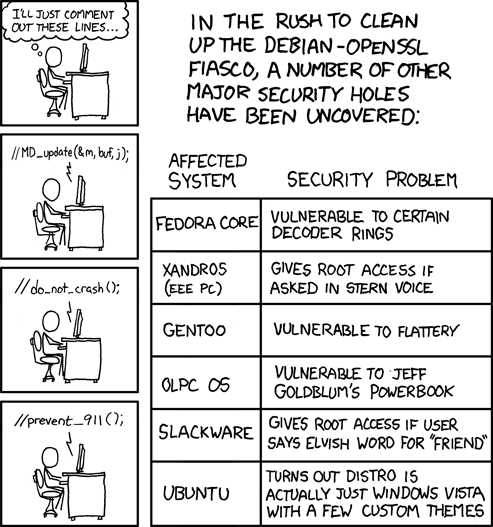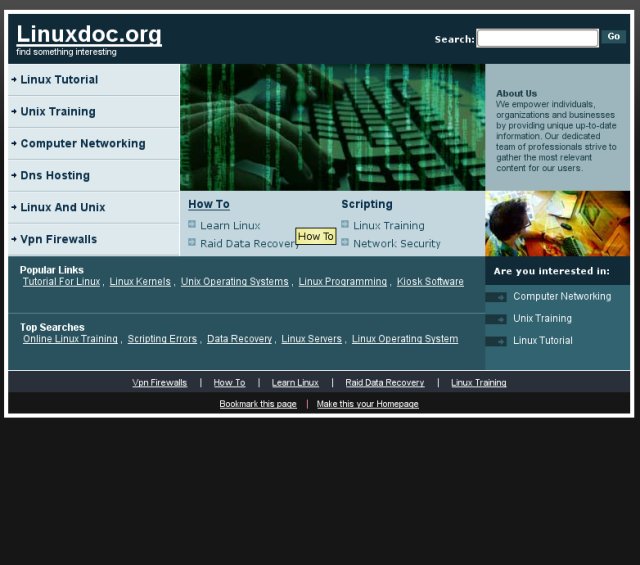My ever growing DVD collection has been taking its toll on my disk storage. Despite the fact that ripping a DVD to PSP format typically shrinks it to between 300 and 500 MB, that still means that I have over 300 GB of videos on my PC. Add to that the OGG vorbis audio collection of my ripped CDs and the usual collection of photos and other critical data that I back up to the slug and I was getting perilously close the 500 GB limit of the attached USB disk. Time for an upgrade.
ITB disks are now appearing on the market at well under £100.00. Ebuyer are currently selling 1TB Toshiba external disks for an astonishing £69.00 inc VAT, but there were none actually in stock this weekend. Fortunately I managed to source exactly the same disk from a local supplier for only a few pounds more than the ebuyer price. Times certainly are hard. I doubt that he made much of a margin on the sale. But it made me happy and he knows I’ll go back there again.
Since I originally built my slugs last year, Debian Lenny has moved from testing to stable, and the latest Debian installer from slug-firmware.net is now “Debian/NSLU2 (armel) 5.0 Stable”. For a while the installer was available in two flavours for the ARM architecture used by the slugs.. The old ARM port was called “arm”, whilst the new ARM port using the EABI (see wiki.debian.org/ArmEabiPort) is called “armel”. This port supposedly offers better support for floating point and other features. Both the arm and armel architectures are supported for Lenny (now Debian 5.0) but according to Martin Michlmayr the old arm port will be dropped after this release. So, it looks as if an OS upgrade is necessary now anyway. Unfortunately, there seems to be no easy upgrade path from arm to armel, so a reflash was in order. This took me rather longer than I had anticipated because of a stupid mistake on my part. Lesson – always document any changes you make – even on a small network……
Martin has updated his excellent installation notes to cover both the new image and the installer itself. In that note he says that the installation should take around four hours. Well mine took nearer to six because I couldn’t connect to the damned slug after reflashing with upslug2. The IP address I had previously been using on the slug wouldn’t respond at all. I tried reflashing again, then reflashing with the original Linksys image in the hope that I could then connect to the default Linksys address of 192.168.1.77 and reconfiguring from there Then reflashing again. Nothing worked.
Now, whilst my network is not overly complicated, it is segmented and I use two separate RFC1918 netblocks. I couldn’t recall using the slug on a different netblock to the one I was attempting to install on, but in a “what the hell, it’s worth a try” moment, I unhooked the slug from my internal net and stuck it on a separate switch along with a laptop to test connections. I configured the laptop with my outer net’s address and then ran nmap to scan the entire range hoping to find the slug. No joy,
At this stage I thought that I must have fritzed the slug somehow and was about to give up. But before doing so, I switched back to testing on the original network address – i.e. I reconfigured the laptop to my internal network address range and re-ran nmap. Bingo – up popped the slug. On the same IP address as my main PC on the internal net. I then remembered that I had shuffled some machines around on the internal net and moved from DHCP to static addresses (in a “rationalisation” period a few months back). I had given the slug a new fixed IP address, but had, of course, forgotten that the old IP address would be hard-wired into the slug’s flash memory . The only way you can change this hard-wired address is through the Linksys interface, which of course I was no longer using. My reflash of the slug had removed the IP address I had configured in Debian and left the old, conflicting address, in use. And no, I have no idea why I chose to use the same address for my main PC. A great way to spend a saturday afternoon. Next time, write it all down.
Martin is right though. After the wasted time, the new install took around four hours.





